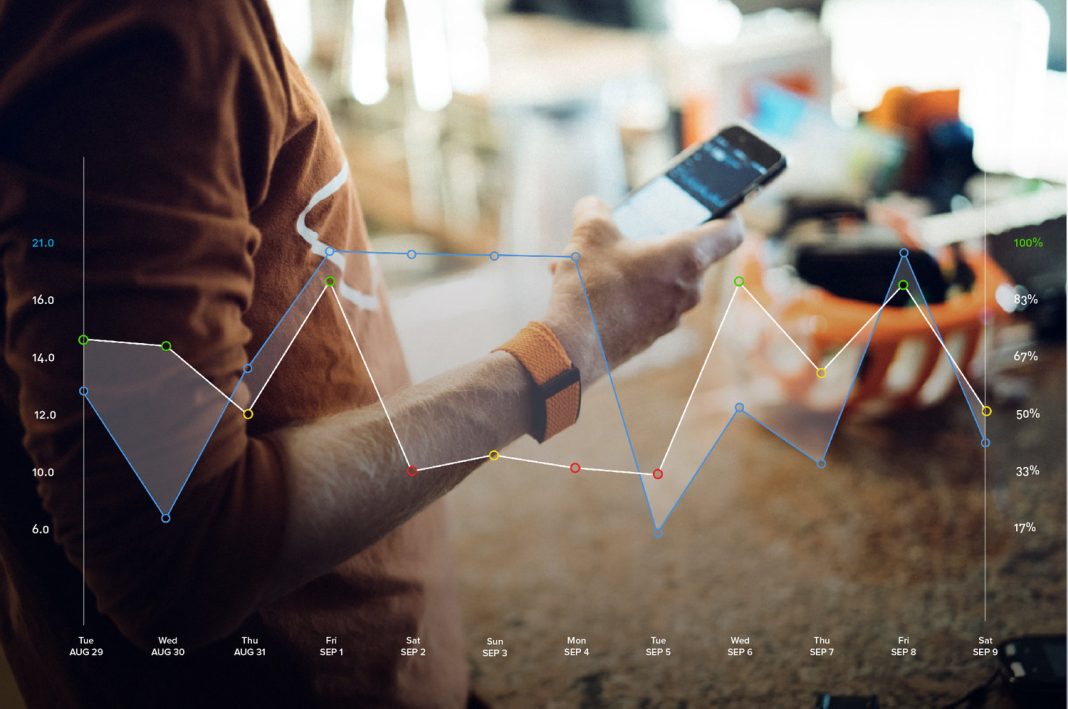This story originally appeared in Techcrunch
On the heels of Google buying Fitbit for $2.1 billion, another player in wearables and health technology has picked up a big round of growth funding to continue expanding its business. Whoop, which makes a sensor-equipped (and screen-free) strap that continuously tracks your activities 24/7 and then provides a multitude of performance metrics and other data based on that activity, has closed a round of $55 million, a Series D that it will use to continue expanding its business into a wider range of wearables and analytics that can be gathered around them.
Today the devices measure things like how much strain a workout is causing you, how you are recovering afterwards, your sleep, whether training is having the desired effect, whether you are working at a level that will be less likely to cause injury and how you are likely to perform. Looking ahead, the plan is to bring the sensors into more places than just the strap it currently makes. “You’ll see Whoop over time worn throughout your body,” CEO Will Ahmed said. “The tech can live in other areas of the body, people will not even know you are wearing a sensor. We like the idea of tech being invisible while still being there.”
The funding brings the total to more than $100 million for the Boston-based company, and while Ahmed, who originally incubated the startup at Harvard with co-founders John Capodilupo and Aurelian Nicolae, said the valuation was not being disclosed, he did describe it as “healthy” — which I guess is appropriate for a health-tech company.
For some context, PitchBook notes that its last round of $25 million, in 2018, was at $125 million, post-money. That would mean a minimum of $180 million here, although the “healthy” implies it is actually higher. (We’ll continue to dig around and will update the number if we learn more.)
Whoop doesn’t disclose how many users it has currently, or anything about its financials, but its investor list is a good measure of the traction that Whoop has had to date, as a company pitching its product not just to the mass market, but to an elite group of sports people — who in turn are not just major athletes, but, in this day and age, major influencers when it comes to purchasing power.
This latest round was led by Foundry Group — coincidentally also an investor in Fitbit — with participation from Two Sigma Ventures, Accomplice, Thursday Ventures, Promus Ventures and Silicon Valley Bank. Individual investors included David Stern, the former NBA Commissioner; Ed Baker, former VP of product and growth at Uber, and former head of International Growth at Facebook; Marc Randolph, co-founder and first CEO of Netflix; and Nicholas Negroponte, MIT Media Lab.
Previous backers of the company include the Durant Company, the National Football League Players Association, Twitter chief executive Jack Dorsey, Los Angeles Chargers offensive tackle Russell Okung and Mike Novogratz, the chief executive of Galaxy Digital.
One notable shift Whoop has seen in the last year is that it has dropped the price of its wearable from an eye-watering $500 down to free. Instead, it bundles the strap into a wider membership program that you do pay for, starting at $30/month and decreasing, depending on what you would like to measure and use the data for (specifically, pricing is six months of data for $30/month; 12 months for $24/month; or 18 months for $18/month).
Offering its devices for free is just one of the ways that Whoop diverges from the usual wearables story.
At a time when wearables have become part of the gadget pantheon, equipped with screens and acting as little computers in their own right, Whoop has taken a very different turn, opting to build a device that looks nothing like a piece of electronics, even if behind the scenes it’s using just as much AI and other powerful technology to crunch the data that its five sensors are continuously collecting.
“The dirty secret with wearables is that the more features you try to pack in to them, the less effective they are,” Ahmed said. “We have been deliberate about what we want our tech to do. We think about the context of what will make the experience better, and if it doesn’t we’re not doing it.”
He gave me a flat “no comment” on the subject of whether Whoop had ever been approached for acquisition, but it’s notable to watch what has been happening around big tech. Apple has been seeing sales growth of its Watch outpace its other iconic products. Amazon is building a massive health services business that will likely also have a hardware component. And Google’s acquisition of Fitbit (if it clears all regulatory and other hurdles) is a big sign of how the company also sees this area as one where it will want to have a seat at the table.
“Google buying Fitbit is a sign that health data will be a big piece of the future for tech companies,” Ahmed said, pointing out that the company’s lack of growth in device sales is a strong sign that Google bought it largely for its data capabilities. “It puts a big value on data and what it’s done there and suggests Google will use the data to create health products.”













